Pablo Neruda was a man who practiced what he preached. He embraced the odd in all facets of life, be it his prose or interior design. These homes prove it.
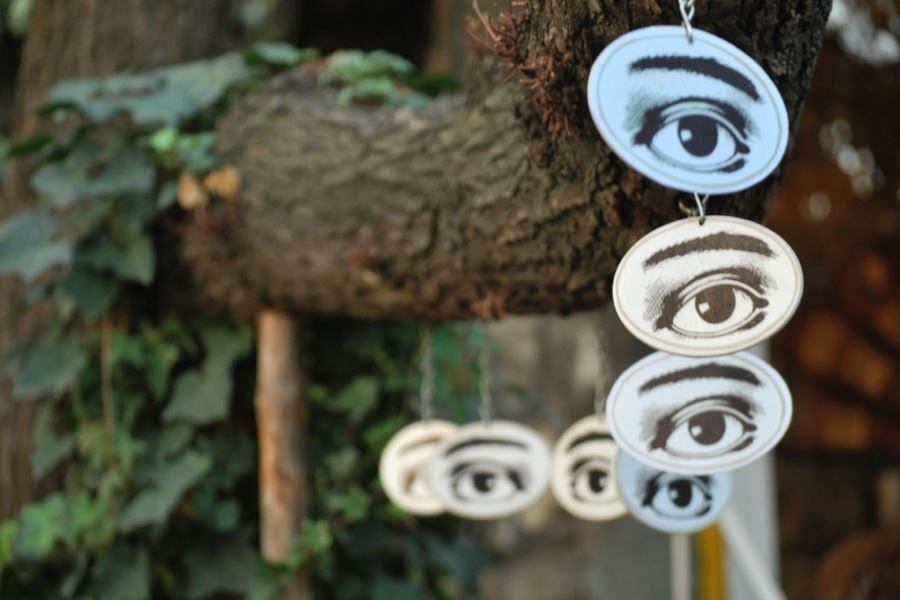
A row of eyes watches over La Chascona, a house designed for an affair. Source: Flickr
The Chilean poet Pablo Neruda was infatuated with being unusual. He would only use green pens to draft his poems, and he even gave himself his own name. His parents had chosen to call him Ricardo Eliezer Neftali Reyes y Basoalto, but Ricardo Reyes re-christened himself as Pablo Neruda as a teenager.
In his Nobel Prize acceptance speech, Neruda said, “I did not learn from books any recipe for writing a poem.” The same holds true for designing his homes. Full of strange collections of shells, beetles, colored glass, and mementos of life on the sea, Neruda’s three spectacular houses – Isla Negra, La Sebastiana, and La Chascona – are profoundly odd. They are as original as his silky verse.
Pablo Neruda Houses: Isla Negra
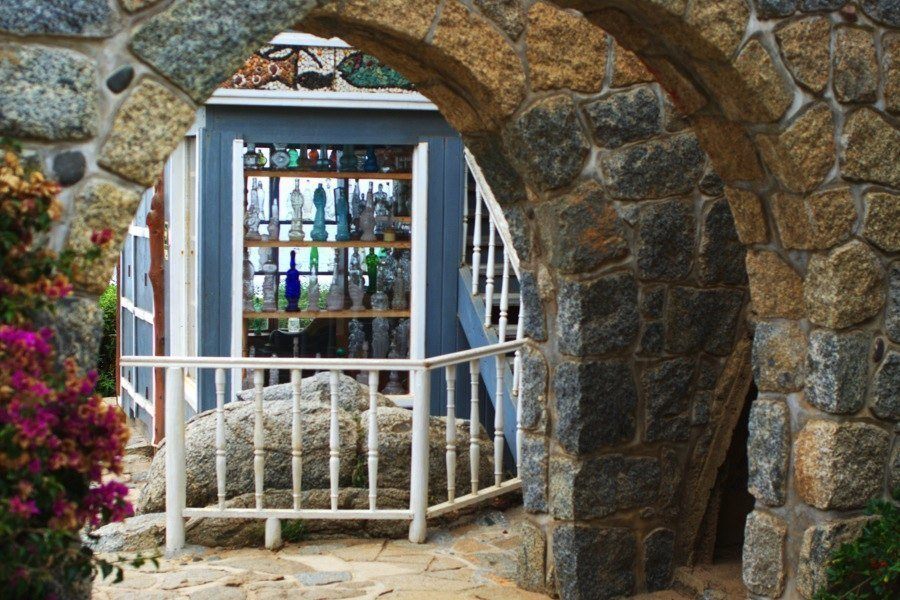
Archways leading around the back of Isla Negra and offering a glimpse of Neruda’s collection of colored glass. Source: Flickr
The author of Twenty Love Poems and a Song of Despair, The Book of Questions, The Captain’s Verses, and dozens of other books spent his twenties as a diplomat. His posts included Burma, Sri Lanka, Singapore, and Spain. When he returned to Chile at the age of thirty-three, he wanted a home where he could write. He found it on the Pacific coast, south of Valparaiso in central Chile.

Isla Negra, Neruda’s beloved home on the Chilean coast. Source: Flickr
Neruda called his coastal chateau Isla Negra. It isn’t on an island, and the house is painted blue, but Neruda gave the place this name because of its black rocks and because, for him, it was an isle of isolated calm. He lived there, off and on, from 1937 until his death in 1973.
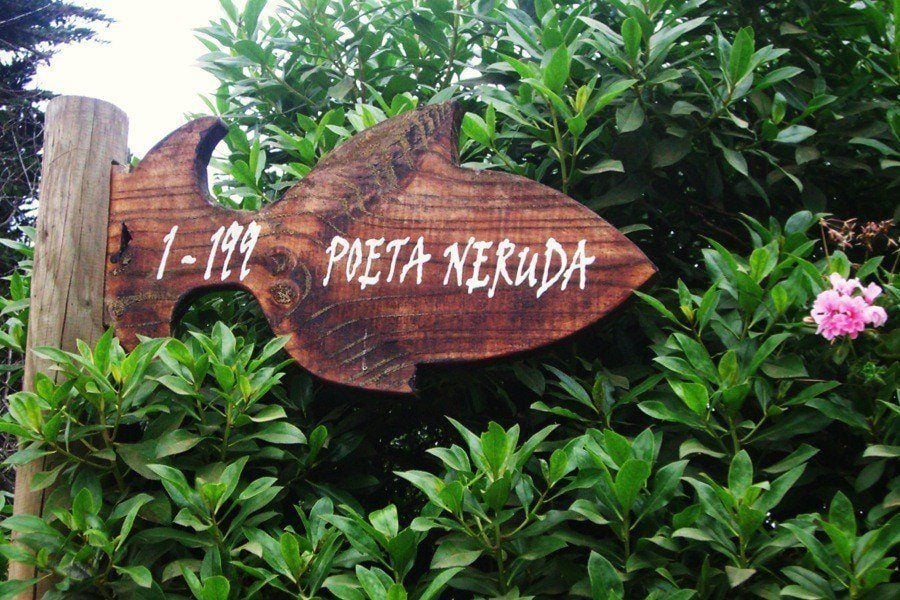
This street sign leads to Isla Negra. Source: Flickr
Set on a sandy knoll on the edge of the ocean, Isla Negra reflects Neruda’s devotion to the deep. The house itself is designed as ship, with narrow passageways and wood-plank floors.
Sails, tusks, ships-in-bottles, shells, and artifacts from the poet’s world travels brim from the shelves and nooks of each room. Neruda collected ship figureheads, and these carved wooden women, mermaids, and sirens appear throughout the sprawling home. When he entertained guests, he would call himself the “Captain” and sometimes even dressed in costume.
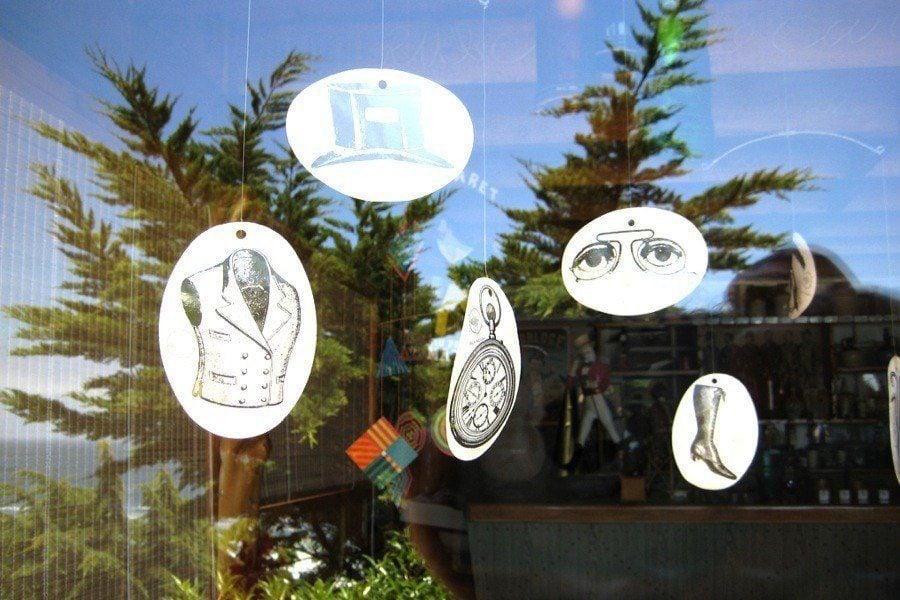
All of Neruda’s homes had weird cutouts like these at Isla Negra. Source: Flickr
Neruda also kept a private bar at Isla Negra. Decorated with the same nautical knickknacks as the rest of the house, the bar has another distinguishing feature. When a friend died, Neruda would carve his name into the support beams above the bar. Visitors to the house today can see seventeen names scratched into the wood.
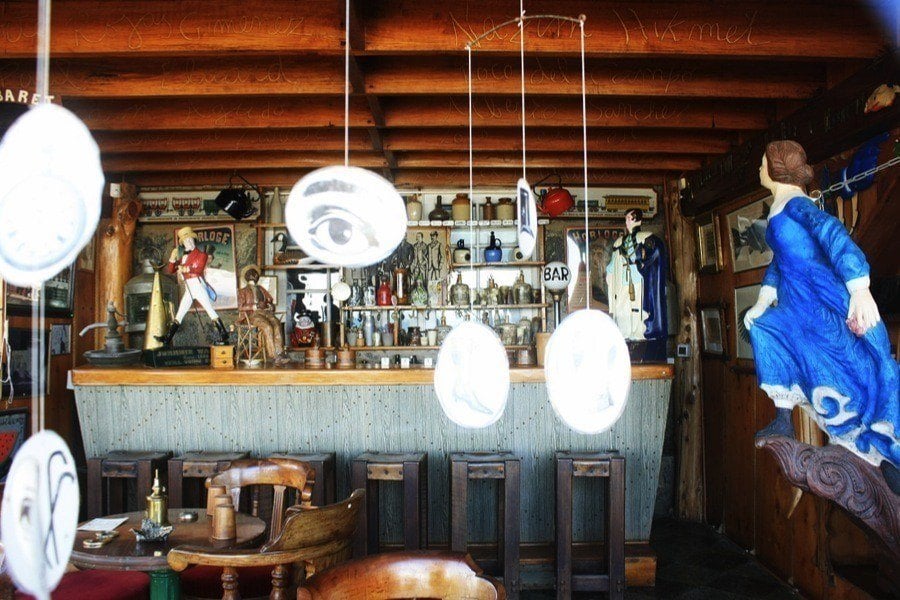
Neruda’s “captain’s bar” at Isla Negra.
La Sebastiana
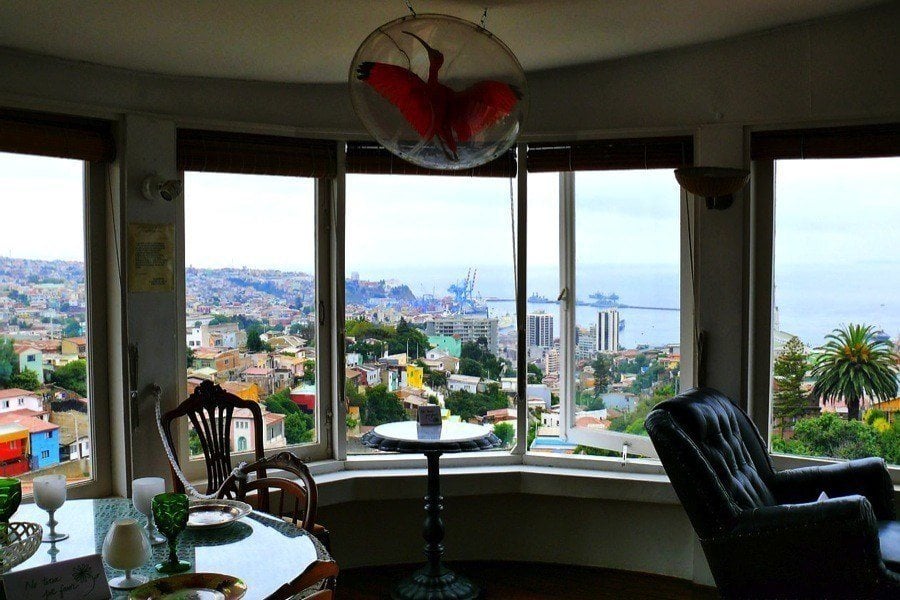
The stunning views from La Sebastiana, Neruda’s house in Valparaiso.
Valparaiso is a city of hills. They rise up from the Pacific coast like great tidal waves of land and offer spectacular vistas of the city’s busy ports. On the top of one of these hills stands La Sebastiana, Neruda’s fantastical getaway.
By the 1950s, Neruda was spending most of his time in the Chilean capital city of Santiago. Tired of the capital’s verve, Neruda decided to look for another home in a more tranquil setting. He wrote that he wanted a house that “seemed to float in the air, but was well established on the earth.” The five-story home atop of Valparaiso’s Florida hill was perfect. Neruda named his getaway La Sebastian, after the Spanish architect Sebastián Collado who built it in 1959.
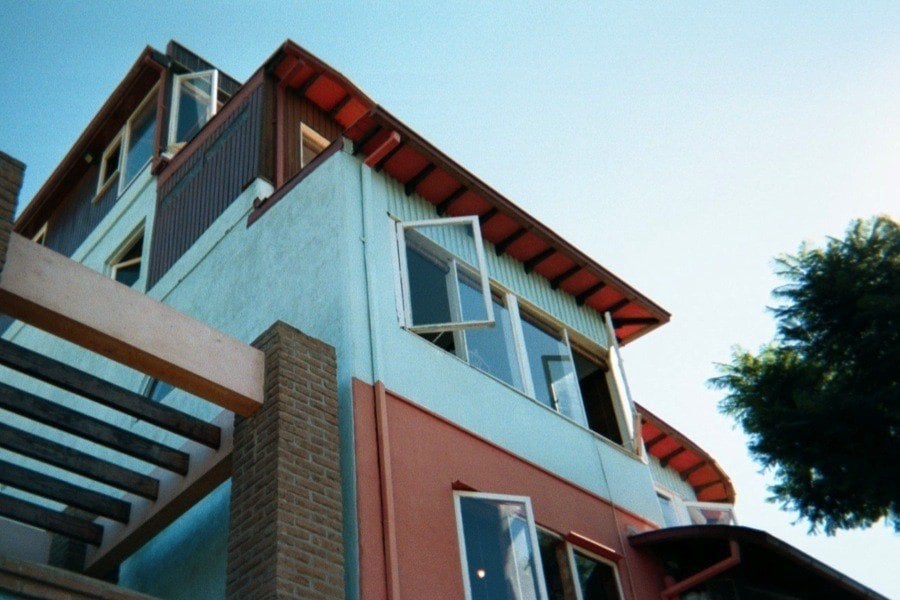
Neruda’s brightly painted La Sebastiana in Valparaiso. Source: Flickr
Like Isla Negra, La Sebastiana is crammed with trinkets, souvenirs, maps, and nods to the mariner’s life. There is a “captain’s bar,” which is painted a bright pink and which, apparently, only Neruda could stand behind. A portrait of the British admiral Lord Cochrane hangs on one wall. The man the French called le loup des mers, “the sea wolf,” helped the Chileans build their navy during the war of independence from Spain.
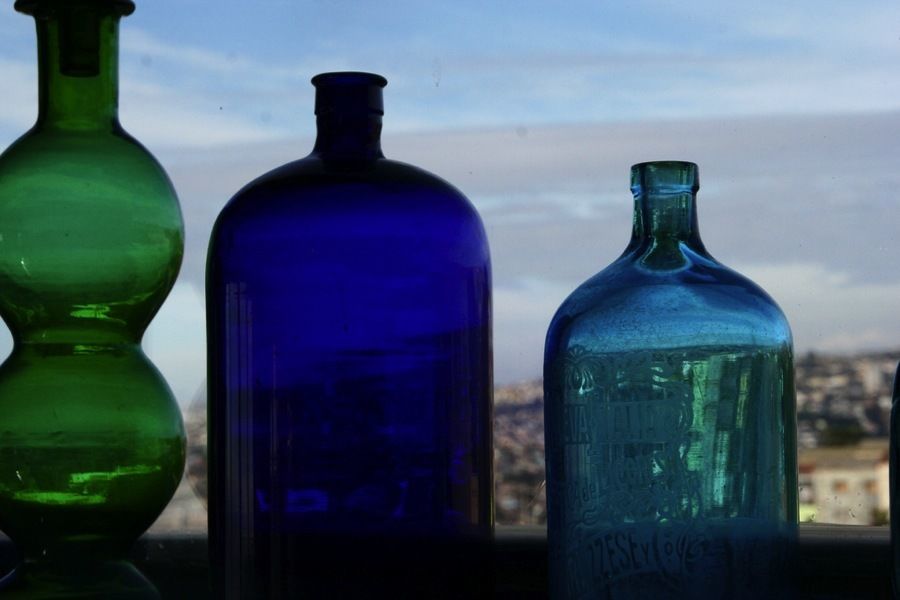
Part of the poet’s collection of colored glass sits on the windowsill of La Sebastiana. Source: Flickr
La Sebastiana is a skinny tower with unparalleled views of the Pacific Ocean. All of the floors have broad, tall windows facing the waters, and the breeze comes through carrying the scent of salt.
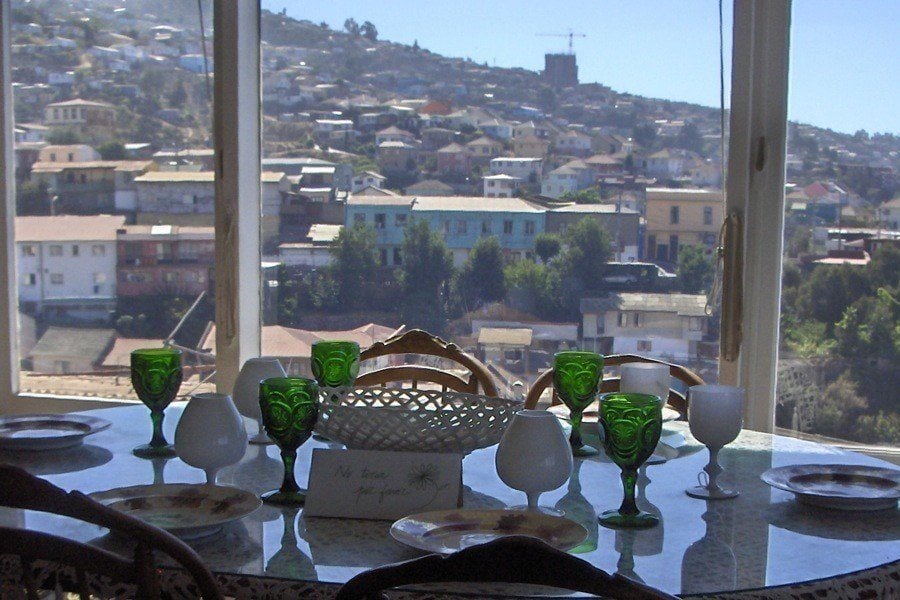
The “captain’s” dining table in La Sebastiana. Source: Wikimedia Commons
La Chascona

Source: Flickr
In the late 1940s or early 1950s, Neruda began cheating on his second wife with a physical therapist and popular singer named Matilda Urrutia. Matilda was known for her wild, curly red hair, and so when Neruda began designing a house for their illicit rendezvous, he named it La Chascona, “the one with tangled hair.”

Bright decorations in La Chascona. Source: Flickr
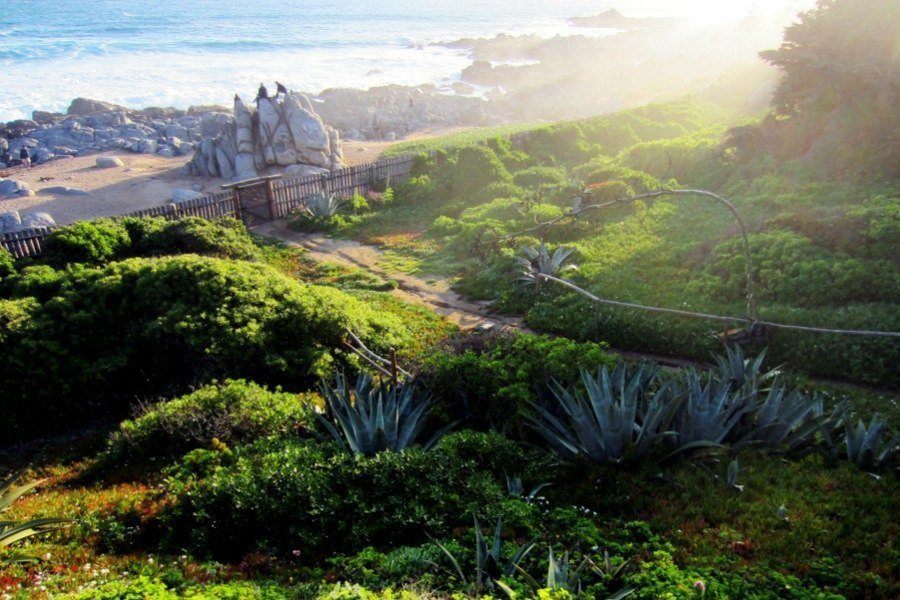
Neruda’s back garden at Isla Negra. Source: Flickr
Nestled in the quiet Bellavista neighborhood of Chile’s capital city of Santiago, La Chascona is a splash of blue on a dull dead-end street. Outside, a boomerang of enormous eyes hangs from the bows of a tree.
Inside, the rooms are cluttered with Neruda’s collections of ashtrays, Polish dolls, maps, old sailing compasses, and traditional masks. There is a picture of Walt Whitman on one table, but most eyes swing toward a painting by the Mexican muralist Diego Rivera–a portrait of Matilda herself.
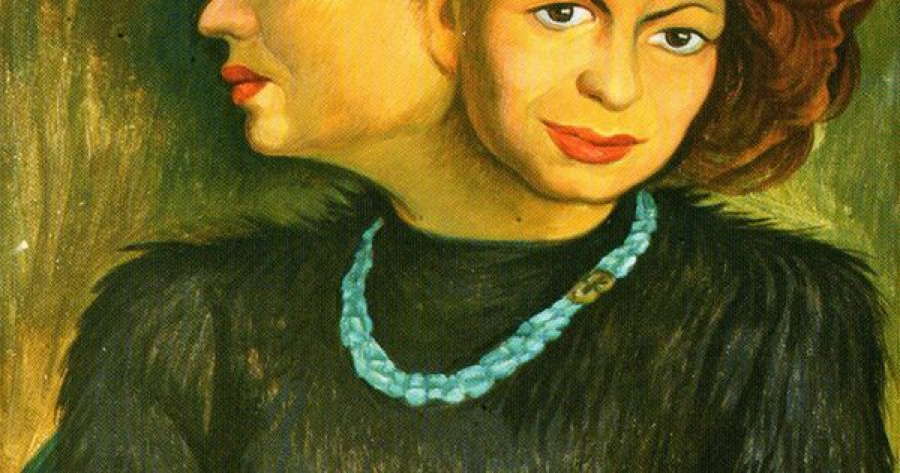
Diego Rivera’s portrait of Matilda
The portrait shows Matilda with two faces like some sort of mythical monster-queen, the wildfire red of her hair resting against a cool green backdrop. On one side, the wiggles of her hair form a sketch of Neruda’s profile. It is a weird and fairly unsuccessful piece of art, but the portrait certainly demonstrates Neruda’s enthusiasm for the muse of the last stage of his career.

Neruda loved huge windows, like the ones in La Chascona shown here. Source: Wikimedia Commons
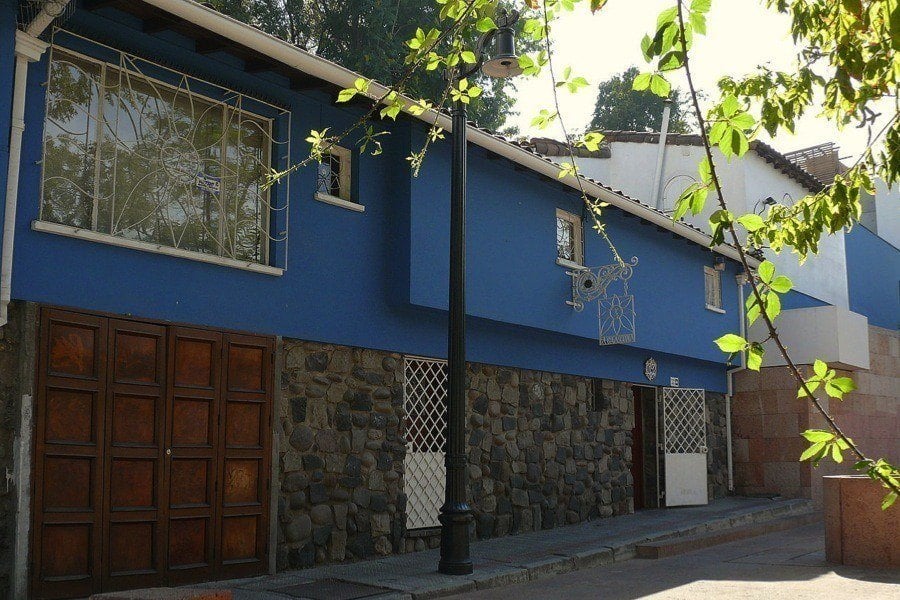
La Chascona, Neruda’s quiet Santiago love nest. Source: Wikimedia Commons
Matilda inspired several volumes of the Nobel laureate’s poetry, and eventually she became Neruda’s third wife, and the two are now buried together at Isla Negra. Out of all his weird homes, that “island” on the mainland’s shore was the one he loved the most.





